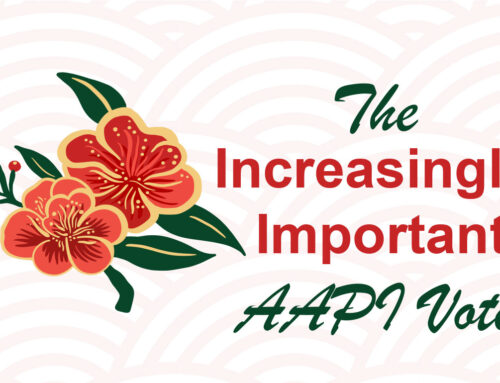Every October of an election year, TargetSmart launches TargetEarly, a first-of-its-kind tool that allows anyone to track – and analyze – the early vote as votes are cast. We’re proud to launch the 2022 version of the tool today.
Visit targetearly.targetsmart.com
Using TargetEarly, you can track national and state by state early vote data to keep tabs on close congressional and gubernatorial elections. You can also look at a wealth of demographic data including age, gender, race, marital status, and partisanship, as well as whether voters live in urban, suburban, or rural areas, and whether they are frequent or infrequent voters. The tool also allows users to compare the data to 2020 and 2018.
While we have access to better data than ever before, analysis of this data is more challenging than ever.
Here’s why:
- There is no perfect precedent to compare against. Early vote access has expanded dramatically since 2018, but many states have limited access again since 2020, making comparisons to either year imperfect.
- Voting habits change. Trump and ultra-MAGA Republicans’ attacks on our voting system have made early voting a political statement. That has had the effect of driving down Republican early voting, while moderates and Democrats continue to embrace the practice. So, while early voting numbers are likely to look good for Democrats, Republicans are even more likely to turn out on Election Day, in person.
- The data that we are sharing with you allows us to see if someone voted, it does not allow us to see for whom that vote was cast.
- While we update TargetEarly every day, there is a lag time between when election administrators post and when that data is available on the site. That’s because we match those voting records against the entire file so we can learn more about each voter. It’s also important to note that states do not always uniformly upload information: some jurisdictions in the same state are slower than others.
In the coming weeks, we’ll share occasional analyses on the latest early vote numbers along with how to interpret that data. Here are a few initial takeaways from the early votes that have already been cast:
Pennsylvania
The path to the Senate majority runs through Pennsylvania. Historically, early voting in Pennsylvania has been restrictive, evidenced by the fact that more people have voted already in this cycle than in all of the early vote period in the 2018 election.
- With three weeks to go, there have already been 294,809 ballots cast in Pennsylvania. At this point in 2020, a presidential election where turnout is drastically higher, there had been 356,914 ballots cast. And at this point in 2018, there had been just 30,483 ballots cast. The 2022 numbers do not yet include ballots cast in Philadelphia county, whereas the 2020 and 2018 numbers do.
- Of the 294,809 votes in Pennsylvania so far, Democrats have accounted for 213,126 (72.3%) of them, compared to Republicans accounting for 71,333 (24.2%).
- During the same time frame in 2018, Democrats accounted for 19,100 (44.0%), compared to Republicans accounting for 21,092 (48.6%).
- Women are accounting for 56% of the early vote, compared to 43% men. This 13-point gender gap is a 5 point increase over 2018.
Clearly, Trump’s rhetoric is impacting how Republicans are voting. This puts a lot of pressure on Republicans to turn their voters out on Election Day and overcome the votes that Democrats will already have in the bank.
Georgia
The Senate majority being decided in Pennsylvania? Georgians may have something to say about that, as it was the Peach State that sent Raphael Warnock and Jon Ossoff to the Senate and delivered Democrats a razor thin majority in 2020. They’ll look to continue that trend and keep Warnock in his seat, fending off a fight from the embattled Republican candidate Herschel Walker.
- 289,693 Georgians have voted already in the election, 157,797 (54.5%) votes by modeled Democrats and 113,234 (39.1%) votes by modeled Republicans. This 15-point gap is 5 points larger than it was in 2020 and 19 points larger than it was at the same time in 2018.
- 38.6% of all ballots cast so far (111,723 total votes) have come from African Americans, a 4.4% increase over the share of ballots cast by African Americans at this point in 2018.
Wisconsin
In Wisconsin, a state under the national spotlight as Democratic challenger Mandela Barnes seeks to unseat Sen. Ron Johnson, we’ve consistently seen women outregister men since the Dobbs decision was announced, a gender gap that currently sits at 6 points and peaked over the summer at 16 points. These trends appear to be holding true and translating into actual votes cast.
- So far, women have outpaced men in ballots cast, with 101,703 cast by women compared to 72,393 votes cast by men, a 16-point gap.
- Additionally, Democrats have outvoted Republicans in this early vote period by 15 percentage points.
- At this point in 2020 Republicans held a one point lead over Democrats, and at this point in 2018, Republicans held a 10-point lead over Democrats.
To sum it all up, there are certainly conclusions and observations that can be made from the data we have so far. Democrats, and women, are clearly voting early in high numbers.
In these last few weeks, Republicans are throwing the kitchen sink at Democratic candidates, and races in key states could be decided by a handful of votes. Regardless of how positive the early vote is, it’s important for progressives to stay engaged and sprint through the finish line, or risk seeing a wave of Republican wins in close races up and down the ballot.
Follow along @TargetSmart and @TBonier for more key updates.





